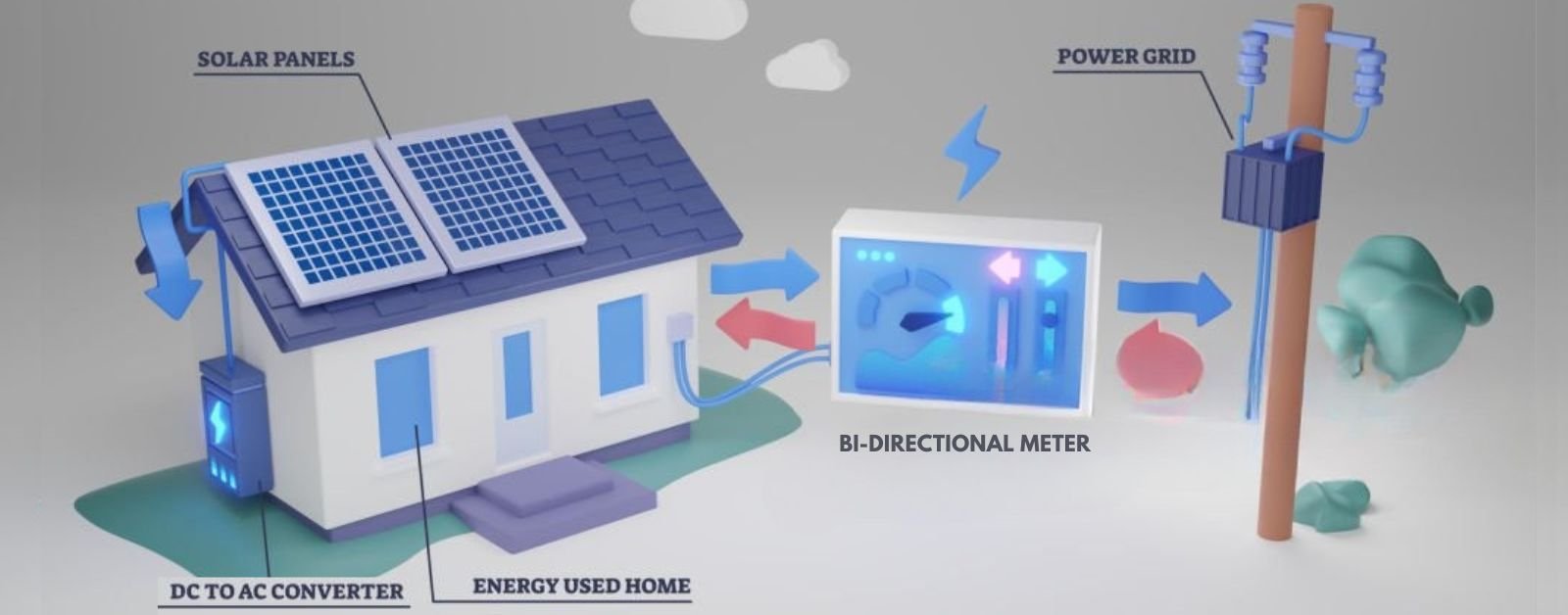As solar adoption continues to grow across Pakistan, net metering has become a crucial part of the energy landscape—especially in regions like Islamabad, where IESCO (Islamabad Electric Supply Company) serves a large number of residential, commercial, and industrial consumers. Net metering allows solar panel owners to export excess electricity back to the grid and receive compensation for it. However, 2025 has brought significant changes to how these compensations are calculated. The IESCO net metering rates have shifted dramatically, and many consumers are now wondering how these changes affect their solar investment and monthly electricity bills.
In previous years, solar users enjoyed a buyback rate of Rs 27 per kilowatt-hour, which made solar installations extremely attractive. But with the new 2025 reforms, the buyback rate has been slashed to Rs 10 for new applicants—raising questions about payback periods, grid dependence, and the financial viability of solar in today’s landscape.
IESCO Net Metering Rates 2025 Guide – Solar Buyback Updates
In this guide, we will explain the current IESCO net metering rates for 2025, how the new rates work, what it means for your solar ROI, and how to adapt to the evolving net metering policy.
What is Net Metering?
Net metering allows solar energy users to send excess electricity back to the grid in exchange for credits or compensation. In Pakistan, this system is regulated by NEPRA (National Electric Power Regulatory Authority) and implemented by distribution companies like IESCO (Islamabad Electric Supply Company).
Benefits of Net Metering in Pakistan
- Offset high electricity bills
- Earn credits for unused solar power
- Reduce reliance on fossil fuels
- Support national grid stability
- Environmentally sustainable energy usage
IESCO Net Metering Rates 2025: Latest Buyback Prices
Official IESCO Buyback Rate (as of 2025):
| Category | Buyback Rate (PKR/unit) |
|---|---|
| Residential Users | PKR 19.32 |
| Commercial Users | PKR 20.48 |
| Industrial Users | PKR 21.50 |
Note: These rates are subject to change based on NEPRA’s quarterly review. Always verify with IESCO Official Website for updated figures.
How IESCO Determines Buyback Rates
IESCO’s net metering rates are derived from:
- NEPRA’s determined benchmark tariff
- Fuel cost adjustments
- Power purchase agreements
- Seasonal demand and supply shifts
How Does Net Metering Work with IESCO?
Process Overview:
- Install NEPRA-approved solar system (1kW to 1MW).
- Apply for Net Metering with IESCO.
- Site inspection and bidirectional meter installation.
- Start earning credits or payments for excess power exported.
Required Documents:
- System design and certification
- CNIC and proof of ownership
- NOC from local authority (if required)
- Agreement with IESCO
Key Changes in 2025: What’s New?
New Policies and Reforms
- Digital Net Metering Portals: Apply and track online.
- Dynamic Pricing: Time-of-day tariffs for net metering credits.
- Fast-track Approvals: Reduced application processing time (now 20–30 days).
NEPRA Circular 2025 Highlights
- Minimum system size reduced to 1 kW
- Metering infrastructure modernized
- Audit trails for exported/imported units
Eligibility and System Requirements
Minimum and Maximum Capacity:
- Residential: 1kW to 30kW
- Commercial: Up to 100kW
- Industrial: Up to 1MW
System Guidelines:
- Grid-tied inverter required
- Compliant with NEPRA safety standards
- Certified installer documentation
Cost and ROI of Installing Net Metered Solar in IESCO Jurisdiction
| System Size | Avg. Installation Cost (PKR) | Estimated Payback (Years) |
| 5 kW | 900,000 | 3.5 – 4.5 |
| 10 kW | 1,500,000 | 3 – 4 |
| 20 kW | 2,700,000 | 2.5 – 3.5 |
Return on Investment (ROI) is highly dependent on energy usage patterns, system efficiency, and prevailing IESCO net metering rates.
Common Questions About IESCO Net Metering (FAQ)
1. Is net metering worth it in 2025?
Yes. Given rising grid electricity costs, the 2025 buyback rates offer an excellent return for solar users.
2. How often does IESCO pay for excess units?
Payments or credits are typically reconciled monthly or quarterly, depending on contract terms.
3. Can I carry over my credits to the next month?
Yes, under IESCO’s current scheme, excess units can be carried over for up to 6 months.
4. What happens if I generate more electricity than I consume?
You will earn credits, which can be adjusted against future bills. In some cases, a payment can be requested for surplus power.
5. Can I upgrade my solar system after applying?
Yes, but any upgrades must be approved by IESCO and may require updated documentation.
Real-World Experience: Testimonials from Solar Users in IESCO Region
Ahmed from Islamabad:
“Switching to net metering cut my bills by 80%. IESCO’s 2025 digital portal made the process quick and transparent.”
Rabia from Rawalpindi:
“Our 10kW system paid for itself in 3 years. With the new buyback rate, we’re now earning credits during peak summer.”
Best Practices to Maximize Your Net Metering Returns
- Install high-efficiency panels and inverters
- Monitor performance via mobile apps
- Use heavy appliances during peak sunlight hours
- Schedule system cleaning every quarter
- Leverage energy storage (battery backup) for nighttime usage
Internal Resources You Should Explore
Outbound Resources for Further Reading
Conclusion: Why You Should Act Now
The updated IESCO net metering rates for 2025 provide an excellent opportunity for homeowners, businesses, and industries to reduce electricity costs and contribute to a greener Pakistan. With improved buyback rates, streamlined applications, and faster approvals, now is the perfect time to invest in solar and start benefiting from clean energy.
Ready to take the next step? Apply today through IESCO’s official portal or consult a certified solar provider to evaluate your savings potential.
Call to Action: Get a free consultation with NEPRA-approved solar experts and start saving today! Visit Soluxia Energy for affordable, high-quality installations
